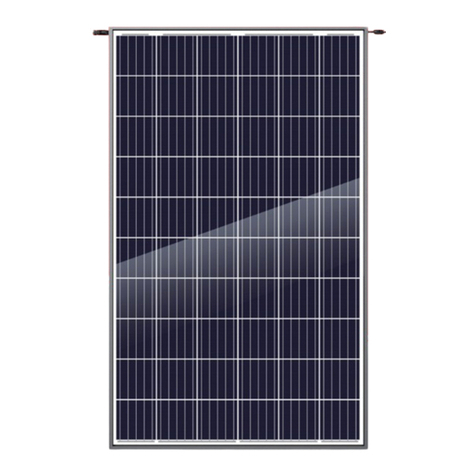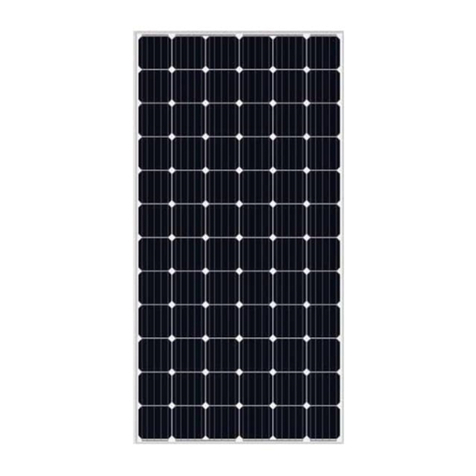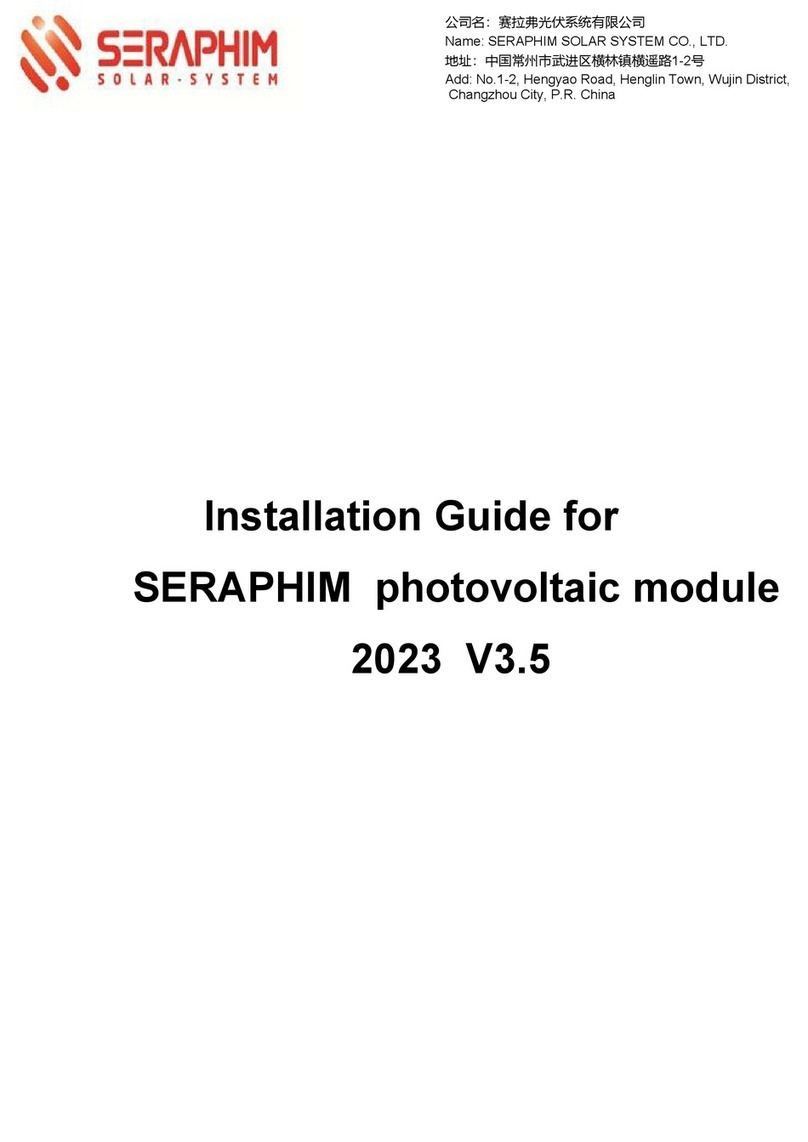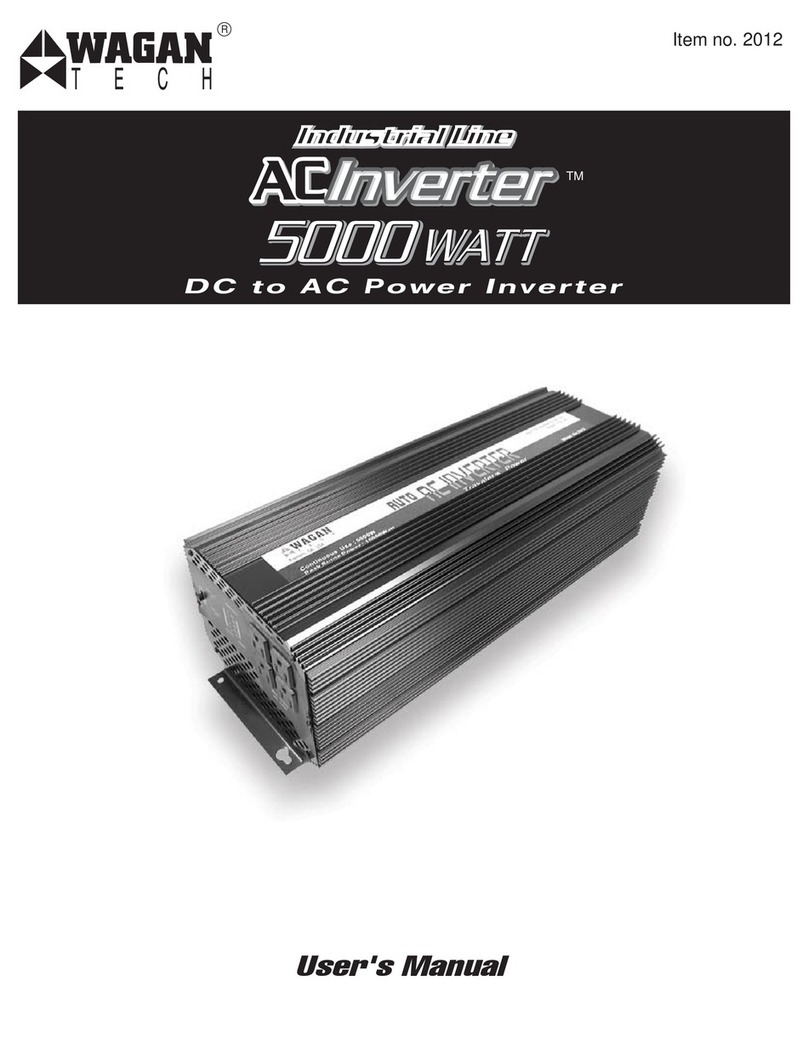Seraphim SRP 6PA Series User manual

SERAPHIM PHOTOVOLTAIC MODULE
JIANGSU SERAPHIM PHOTOVOLTAIC SYSTEM CO. LTD.
ADDRESS: No.10 TongshunRD Henglin Town Wujin District
Changzhou China
TELEPHONE: +86-519-69699879
MAILBOX: [email protected]

23
Thanks for choosing Seraphim Photovoltaic Modules (hereafter referred to as
“PV Module”), This Guide is to give information onhow to apply Seraphim
PVmodules properly.
Installers must read and understand this Guide prior to installation. For any
questions, please contact our technical department (technic@seraphim-ener-
gy.com) for further information. Installers should follow all safety precautions
described in this Guide as well as local codes when installing a module.
Keep this Guide in a safe place for future reference (care and maintenance)and
in case of sale or disposal of the PV modules.
This document is applicable to the series of PV modules as listed below:
• The PV modules are qualified for application class A, which may be used in
systems operating at greater than50 VDC or 240 W, where generalcontact
access is anticipated. PV modules qualified for safetythrough this part of IEC
61730 and IEC 61730-2 and within this application class are considered to meet
the requirements for safety class II.
• The PV modules shall be properly grounded in accordance with the instruc-
tions in this Guide or the requirements of the National Electrical Code.
• Installing PV modules requires specialized skills and knowledge. Installation
should only beperformed byqualified personnel, electrical connections
law (i.e. the NEC for the USA and CEC for Canada).
• Installers should assume all risks of injury that might occur during installation,
including, but not limited to, the risk of electric shock.
• One single PV module may generate more than 30V DC whenexposed to
direct sunlight. Access to a DC voltage of 30V or more is potentially hazardous.
• PV modules convert light energy to DC electricalenergy, which are designed
for outdoor use. PV modules can be mounted onto ground, rooftop, vehicles or
boats etc. The proper design of support structures lies within responsibility of
the system designers and installers.
• Do not use mirrors or other magnifiers to concentrate sunlight onto thePV
modules.
• When installing the PV modules, abide to all local, regionaland national stat-
utory regulations. Obtain a building permit if necessary.
• Only use equipment, connectors, wiring and support frames compatible with
the PV modules.
• Do not clean the modules with chemicals.
• Do not lift the PV module by grasping the module’s junction box or
electrical leads.
• Do not stand or step on the PV modules or place heavy objects onto it.
• Do not drop the PV module or allow objects to fall on the PV module.
• Do handle with care when move, transport and install the PV modules.
• Do not attempt to disassemble the PV modules, and do not remove any
attached nameplates or components from the PV modules.
• Do not apply paint or adhesive to the PV module top surface.
• Do not scratch or hit the back sheet.
INSTALLATION GUIDE FOR SERAPHIM
PHOTOVOLTAIC MODULE
INSTALLATION GUIDE FOR SERAPHIM
PHOTOVOLTAIC MODULE
XXX Module power
Type 1 SRP-XXX-6PA、 SRP-XXX-6PA-HV、 SRP-XXX-6MA、 SRP-XXX-6MA-HV
SRP-XXX-6PB、 SRP-XXX-6PB-HV、 SRP-XXX-6MB、 SRP-XXX-6MB-HV
SRP-XXX-BPZ、 SRP-XXX-BPZ-HV、 SRP-XXX-BMZ、 SRP-XXX-BMZ-HV
SRP-XXX-BPA、 SRP-XXX-BPA-HV、 SRP-XXX-BMA、 SRP-XXX-BMA-HV
SRP-XXX-BPB、 SRP-XXX-BPB-HV、 SRP-XXX-BMB、 SRP-XXX-BMB-HV
SRP-XXX-BPC、 SRP-XXX-BPC-HV、 SRP-XXX-BMC、 SRP-XXX-BMC-HV
SRP-XXX-BMD、SRP-XXX-BMD-HV
Type 2
Type 3
Type 4
Type 5
Type 6
Type 7

5
4
• Do not drill holes in the frame. Thismay reduce the frame mechanical
strength and cause crack cells due to vibration.
• Do not break the anodized coating of the frame (except for grounding con-
nection), this may cause corrosion of the frame.
• Do not use PV modules with broken glass or torn back sheet which has
danger of electrical shock.
• Do not handle panels in wet condition unless has appropriate protection.
• Do not exposePV module to sunlight until installation to avoid unnecessary
degradation.
•During all the transportation, please make sure there is no strenuous vibration
on module. Because it may cause cell micro crack or damage the module.
• Installation shall be in conformity with IEC standard, Safety Standard for Elec-
trical Installations.
• Do not disconnect under load.
• Do not touch conductive parts of PV modules, such as terminals which can
result in burns, sparks and lethal shock whether or not the PV module is con-
nected.
• Do not touch the PV module unnecessarily during installation.
• Do not work in the rain, snow or windy conditions.
• Do not expose theartificially sunlight to PV modules. Completely cover the
PV module with anopaque material during installation to prevent electricity
from being generated.
• Do not wear metallic rings, watchbands, ear, nose, lip rings or other metallic
objects while installing or troubleshooting.
• Only use insulated tools that are qualified for working onelectrical installa-
tions.
• Follow the safety regulations for all other system components, including wires
and cables, connectors, charging regulators, inverters, storage batteries,
rechargeable batteries, etc.
• Under normal outdoor conditions thecurrent and voltagegenerated will
differ from those listed on the datasheet. When design systems, current and
short-circuit current should be multiplied by a factor of 1.25 to determine com-
ponents ratings.
• Only use connectors compatible with thePV module connectors. Removing
the connectors without prior authorization will invalidate the warranty.
• Do not dismantle installed modules to another project, which may invalidate
the warranty.
Each module has three Barcode stickers which have the same unique serial No.
of each module and one label sticker:
Barcode 2: Stick on the backside of PV modules.
Barcode 3: Stick on the middle location of long Frame side.
of the PV modules.
Check the serial No. in the barcode with the packing list when unpacking. Pro-
vide PV module serial No. when you need support from SERAPHIM on particu-
lar PV modules.
• The fire rating of this module is valid only this Guide is followed.
• Consult your local authority for Guidelines and requirements for building or
structural fire safety.
• Do not use PV modules near equipment or in places where flammable gases
may be generated.
• Follow local codes and laws when install the modules
INSTALLATION GUIDE FOR SERAPHIM
PHOTOVOLTAIC MODULE
INSTALLATION GUIDE FOR SERAPHIM
PHOTOVOLTAIC MODULE
• Do not install modules within 50m of theshoreline

67
• Module can be installed in both landscape and portrait modes 1
• It is recommended to install the same size and the same type of module in one PV
array.
• The PV modules shall be installed high enough to keep it awayfrom potential
shading, flying sands, snow and water.
• It is recommended to install the PV modules 30cmaway from the ground to make
sure ventilation.
• Appropriate installation structures shall be chosen to meet required mechanical
load.
• It is recommended to install thePV modules with minimum angle of 10 degree to
make the dust easily to be washed off.
• It is recommended to keep minimum 10mm gap between PV modules for thermal
expansion of materials.
• Install PV modules appropriately according to corresponding mechanical load
need.
It is recommended to install PV modules where has excellent sunlight resources. In
the Northern Hemisphere, the module should typically face south, and in the South-
ern Hemisphere, the modules should typically face north. The most optimistic instal-
lation angle varies according to different latitudes and longitudes; please consult
experts with appropriate knowledge background whendetermining the installation
locations and angles.
When choosing a site, avoid trees, buildings or obstructions, which could cast shad-
owson the solar photovoltaic modules. Shading causes hotspot and loss of output,
even though the factory fitted bypass diodes of the PV module will minimize such
effect.
Do not install the PV module near naked flame or flammable materials.
Each PV module has 8 mounting holes(shown as drawing1-1).The downward
mechanical load resistance of module would be different according to the
installation holes used(shownas table1-1)Please use 8 of them tosecure the
modules to support structure. The module frame must beattached to a mount-
ing rail using M8 corrosion-proof screws together with spring washers and flat
washers in eight symmetrical locations onthePV module. The applied torque
should be big enough to fix it steadily.The reference torque value for M8 screw
is 16~20N*m.
Do not install the PV module in a location where it would be immersed in water
or constantly exposed to water from a sprinkler or fountain etc.
INSTALLATION GUIDE FOR SERAPHIM
PHOTOVOLTAIC MODULE
INSTALLATION GUIDE FOR SERAPHIM
PHOTOVOLTAIC MODULE
INSTALLED HOLES USED MECHANICAL LOAD
5400Pa
2400Pa
2400Pa
xtracker only for 72 type module
(not suitable for 210 and 182-BMA module)
-1
9
14
8 mounting holes
4 Nextracker holes
-1

9
8
INSTALLATION GUIDE FOR SERAPHIM
PHOTOVOLTAIC MODULE
INSTALLATION GUIDE FOR SERAPHIM
PHOTOVOLTAIC MODULE
(sh-
-1
INSTALLED HOLES USED MECHANICAL LOAD
5400Pa
2400Pa
xtracker only for 72 type module
4 Installation Holes (only for 210 and 182-BMA module)
9
14
4 mounting holes
4 Nextracker holes
For 210 and 182-BMA modules, four mounting holes are used for the frame in the
standard industry, so as to facilitate customer installation.We used four mounting
holes in the frame of 210 and 182-BMA modules (shown on drawing 1-2).
-2
-2

INSTALLATION GUIDE FOR SERAPHIM
PHOTOVOLTAIC MODULE
10 11
INSTALLATION GUIDE FOR SERAPHIM
PHOTOVOLTAIC MODULE
-1
module
type
Type1 1970/1956
1650/1640
1996/2015
1674/1690
992/1002 50
380 580
580 2400
5400
50
380 580
580 2400
5400
50
300 500
500 2400
5400
50
300 500
480 2400
5400
50
300 500
500 2400
5400
mm
Type2
Type4
Type5
Type6
a(mm) A(mm) B(mm)
b(mm) Clamp
length
Loads
(Pa)
mm
mm
mm
1985/
992/1002
992/1002
992/1002
1665/
Type7
2180 1002
1755/1909 1038/1134
mm
mm
380 580 5400
300 500 5400
Type3
50 580 2400
1002
1852 mm
mm 5400
2094 1038
2288/2256
/2279/2278 1134/1133
/1134/1134 380 580
5400
380 580
1707/1730
35
Frame
28
Frame
1722
1133/1134
1134
mm
mm
300 500 5400
300 500 5400
For 210 and 182-BMA modules, four mounting holes are used for the frame in the standard
industry , so as to facilitate customer installation.We used four mounting holes in the frame
of the 210 and 182-BMA modules.
In addition, to ensure the reliability of the 210 plate assembly against mechanical loads,
we used three mounting brackets,as shown in Drawing 2-2.
-2
Type5
Type6
Module
type a(mm) A(mm) B(mm) C(mm) D(mm)
b(mm) Clamp
length Loads
(Pa)
2172 250 450 5400
80mm
1303
2384 280 480
50
50
100
100 5400
80mm
1303
-2

INSTALLATION GUIDE FOR SERAPHIM
PHOTOVOLTAIC MODULE
WARNING Electrical Hazard
This module produces electricity when exposed to light. Follow all appli
cable electrical safety precautions.
modules.
• BE AWARE of dangerous high DC voltage when connecting module.
• DO NOT damage or scratch the rear surface of the module.
• DO NOT handle or install module when they are wet.
The wiring components shall be compatible with the PV modules.
The PV modules connected in serial shall have similar current. The Voc of one PV
string shall no higherthan the maximum system voltage(make reference to the
maximum system voltage marked on label), the Voc temperature coefficient
feature and the extreme low temperature of installation location must betaken
into consideration when calculate the Voc of the PV string .
The PV modules connected in parallel shall have similar Voltage. The Isc tem-
perature coefficient feature and the extreme high temperature of installation
location must be taken into consideration when calculate the Isc of the PV
array.
Please refer to local regulations to determine the system wires size, type and
temperature.
The cross-sectional area and cable connector capacity must satisfy the maxi-
mum short-circuit of PVsystem (For a single component, we recommended the
cross-sectional area of cables is 4mm2 and the the rated current of connectors
is more than 15A), otherwise cables and connectors will become overheating
for large current. Please pay attention: the temperature limit of cables is 85°C
and the temperature limit of connector is 105°C
A qualified system designer or integrator should always be consulted.
Building permits, inspections and approvals by the local utility are generally
required.
Where common grounding hardware (nuts, bolts, star washers, spilt-ring lock
washers, flat washers and the like) is used to attach a listed grounding/bonding
device, the attachment must be made in conformance with the grounding
device manufacturer’s instructions.
For grounding and bonding requirements, please refer to regional and national
safetyand electricity standards. If grounding is required, use a recommended
connector type, or an equivalent, for the grounding wire.
If grounding is required, thegrounding wire must beproperly fastened to the
module frame to assure adequate electrical connection (grounding hole shown
as drawing 4).
Whensystem operates in high humidity and high temperature circumstances,
transformer-Based inverter allowing system negative grounding is highly rec-
ommended to achieve mitigating risk of higher power degradation rate.
If the connector is damaged or deformed,
Before installation, make sure that the connector is well protected and there
should be no foreign matter such as soil, sand and gravel in the connector. If any,
it must be cleaned before installation.
the connector must be replaced before use; if there is no spare connector, please
contact seraphim in time.
Remark If conversion cable is needed, see attachment1 for details.
12 13
INSTALLATION GUIDE FOR SERAPHIM
PHOTOVOLTAIC MODULE
TYPE
Type1
1852 1002
2172 1303
50 248 2400
50 248 2400
50 248 2400
60 280 2400
50 248 2400
mm
mm
mm
mm
Type2
Type4
Type5
Type6
e(mm) E(mm) D(mm)
d(mm) Clamps
length Loads
(Pa)
1970/1956
1650/1640
1674/1690
992/1002
1985/
992/1002
992/1002
1665/
1755/1909 1038/1134
Type3 2180 1002 50 248 2400
mm
50 248 2400
mm
1996/2015
/2094
992/1002
/1038
2288/2256
/2279/2278
1134/1133
/1134/1134
60 280 2400
Type7
1707/1730
1133/1134
mm 50 248
50 248
2400
1722 1134 mm 2400
80mm
2384 1303 60 280 2400
80mm
35
Frame
28
Frame

K
Clean the glass surface of the module regularly with clean water and a soft
sponge or cloth. A mild, non-abrasive cleaning agent may be used to remove
stubborn dirt.Water with high mineral content is not recommended to clean
the module.
Check the electrical, grounding and mechanicalconnections every six months
to verify that they are clean, secure, undamaged and free of corrosion.
If any problem arises, consult a professional for suggestions.
Caution: observe the maintenance instructions for all components used in the
system, such as support frames, charging regulators, inverters, batteries etc.
The parameters may be updated time to time, accurate parameters please
check on our website: http://www.seraphim-energy.com or email to our techni-
cal support team: technic@seraphim-energy.com.
9
it is replaced by new version.
INSTALLATION GUIDE FOR SERAPHIM
PHOTOVOLTAIC MODULE
2XØ4
1REMARK
installation
Module
Type
7
Landscape Portrait
installation
14 15
INSTALLATION GUIDE FOR SERAPHIM
DUAL GLASS PHOTOVOLTAIC MODULE

ATTACHMENT ATTACHMENT
INSTALLATION GUIDE FOR SERAPHIM
DUAL GLASS PHOTOVOLTAIC MODULE
1716
INSTALLATION GUIDE FOR SERAPHIM
DUAL GLASS PHOTOVOLTAIC MODULE
This manual suits for next models
25
Table of contents
Other Seraphim Inverter manuals
Popular Inverter manuals by other brands
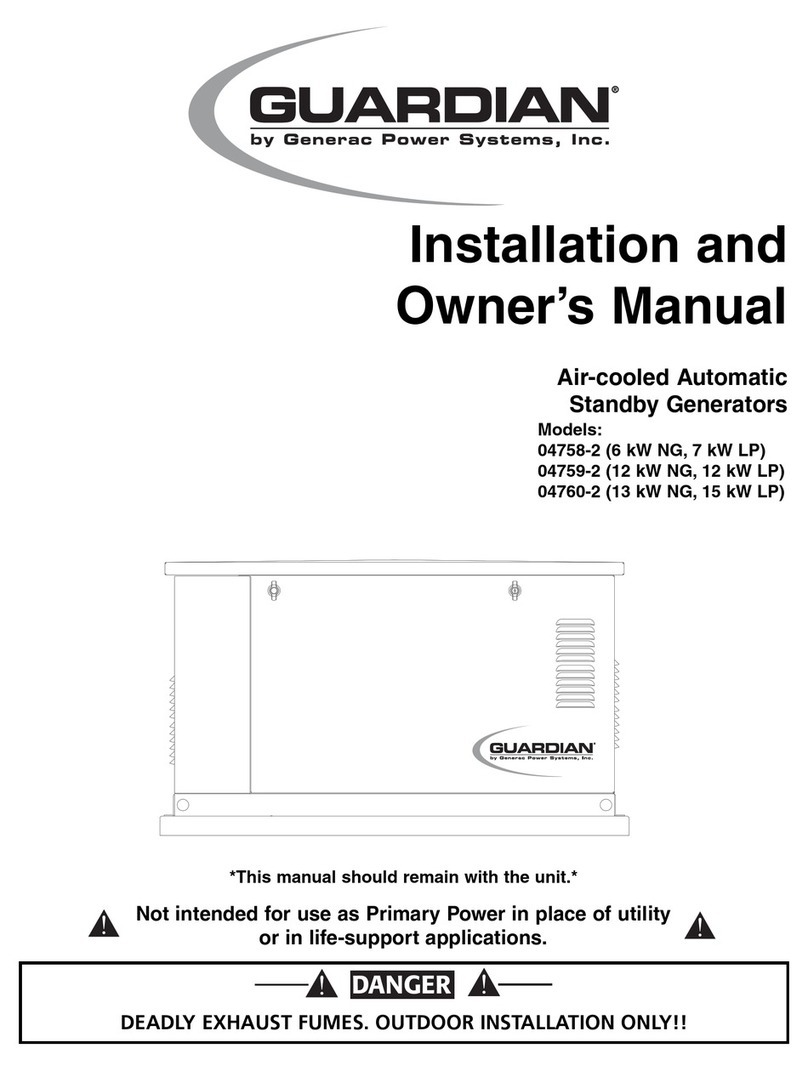
Generac Power Systems
Generac Power Systems Guardian 04758-2 Installation and owner's manual
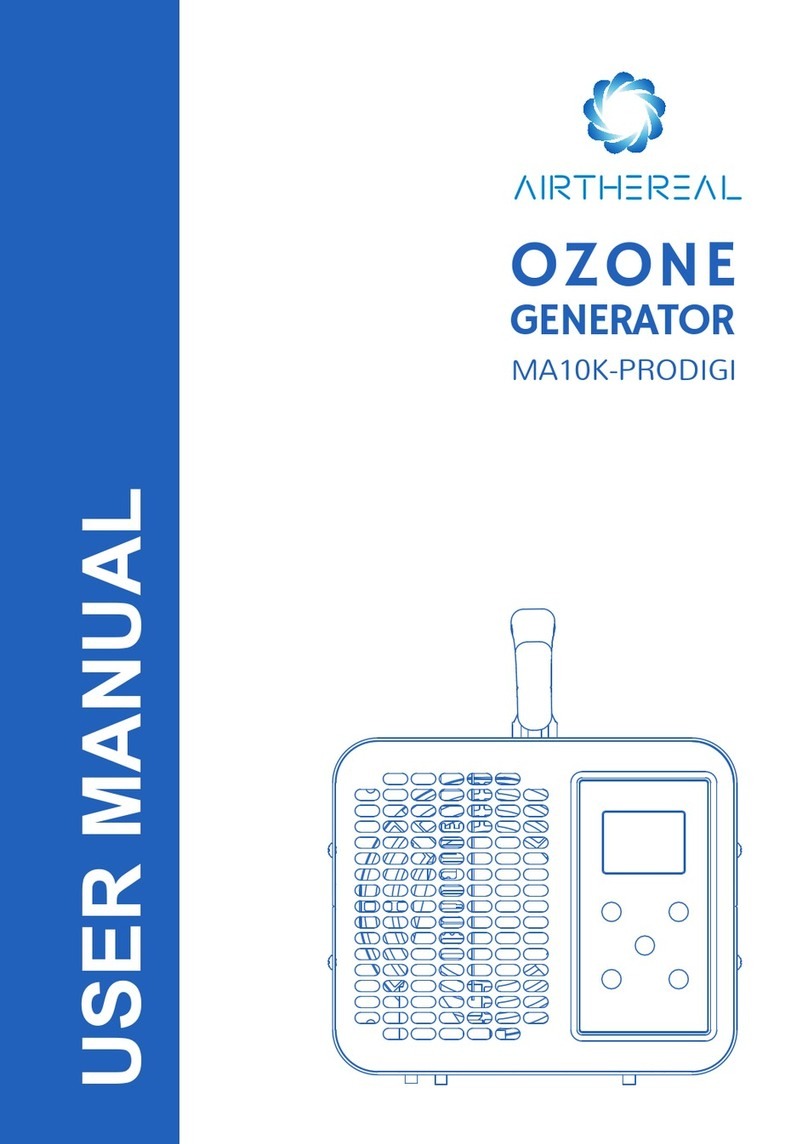
Airthereal
Airthereal MA10K-PRODIGI user manual
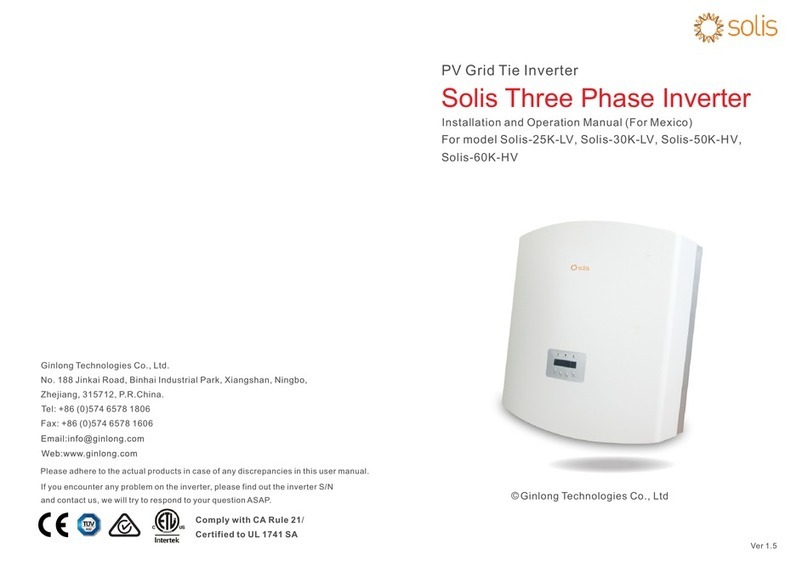
Ginlong
Ginlong Solis-25K-LV Installation and operation manual
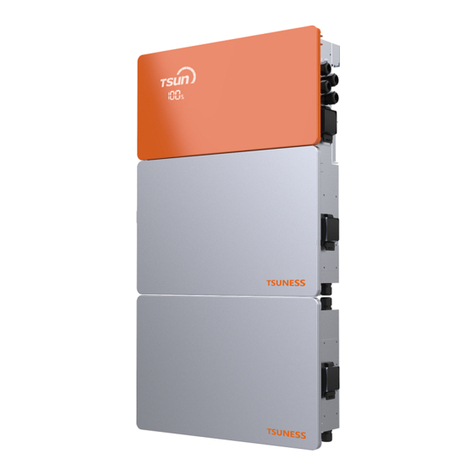
Tsun
Tsun TSOL-ACU3.0K user manual

SMA
SMA SUNNY TRIPOWER CORE1 Quick reference guide
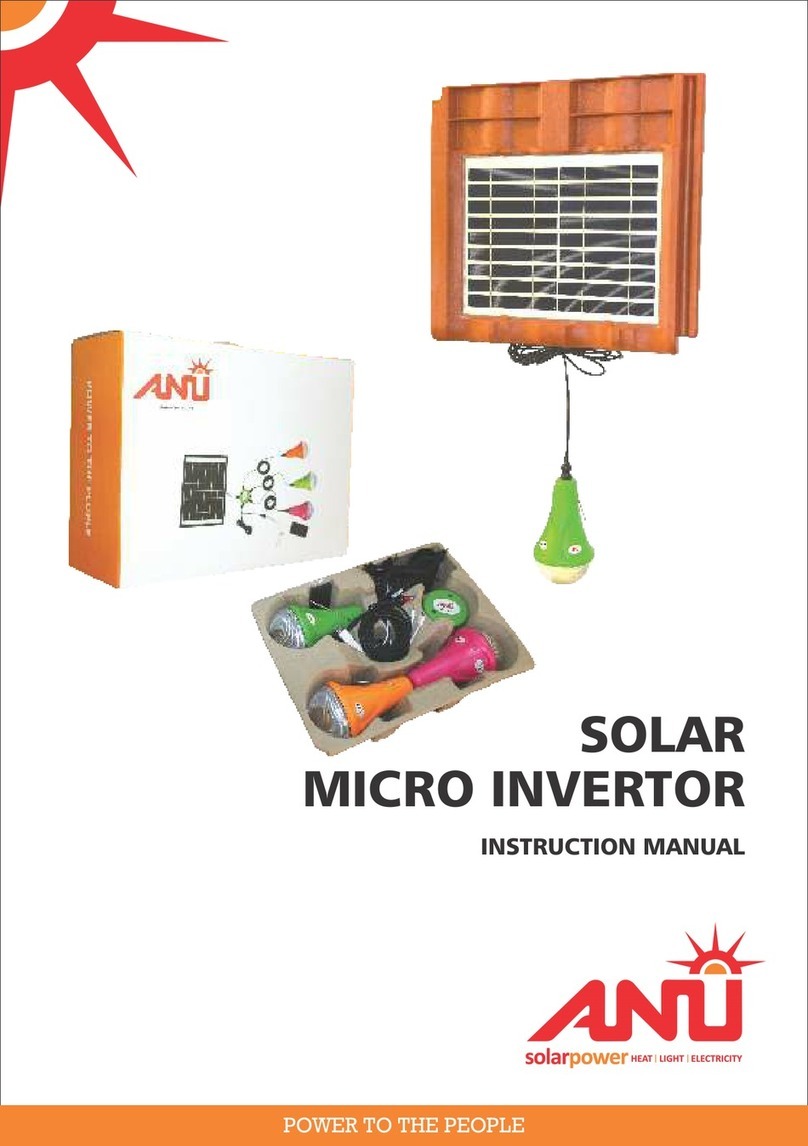
ANU
ANU Micro Invertor Kit manual
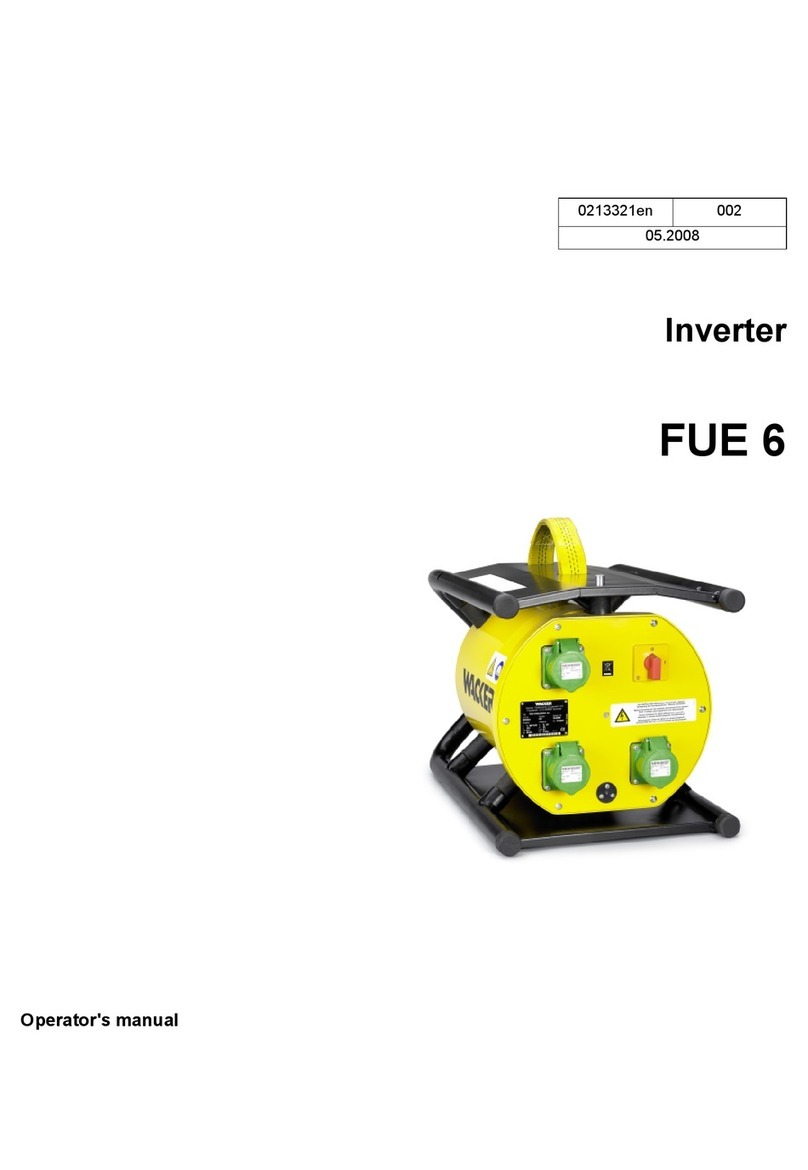
Wacker Neuson
Wacker Neuson FUE 6 Operator's manual
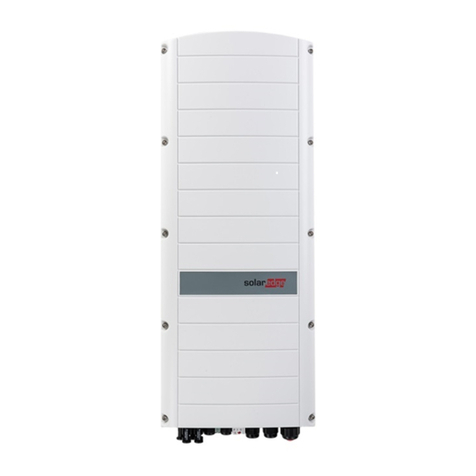
SolarEdge
SolarEdge StorEdge SE10K-RWS quick guide

Leader
Leader LT 4400 Specifications
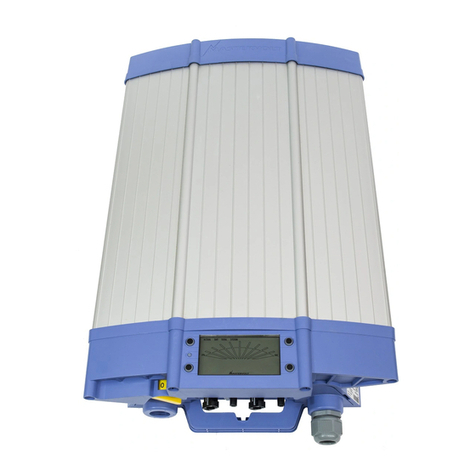
Mastervolt
Mastervolt Sunmaster XS4300 User and installation manual

Power One
Power One Aurora PVI-55.0-YY-TL User, installation and maintenance guide

Peak
Peak ABN2ZA User manuals
